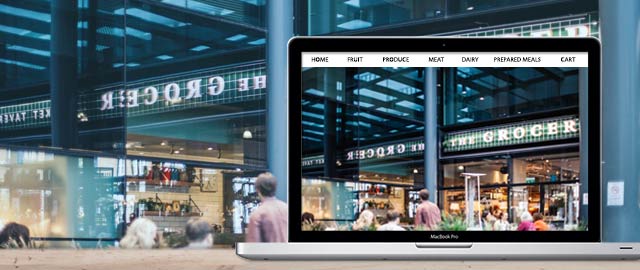Two recent occurrences serve as signals that we’re at a marketing crossroads. In June, Amazon announced that it had offered to buy Whole Foods for $13.7 billion. Two weeks earlier, at Walmart’s 47th Annual Shareholders Meeting, President and CEO Doug McMillon vowed to make the company “people-led and tech-empowered” with enhanced capabilities for online ordering and better delivery options. (Walmart was also rumored to be a potential Whole Foods suitor.)
In other words: Amazon, America’s leader in e-commerce, is becoming more like Walmart, America’s leader in physical retail — and vice versa. To which I say: What took you guys so long?
Shifting Borders
I thought Amazon should have expanded into physical stores years ago when the Borders bookstore chain went bankrupt. (The New York Times noted that Borders’ demise was hastened “by pressure from Amazon.com … and big-box stores like Walmart.”) It was the perfect opportunity for Amazon to acquire an existing bookselling infrastructure — in particular, its real estate — and customize it for the next logical step in the company’s evolution.
The advantages seemed obvious. I envisioned Amazon creating kiosk-oriented stores where customers could not only buy books from the onsite inventory but also order any book in the Amazon catalog with the swipe of a card. That would have provided Amazon a cost savings because in-store swipes are less expensive to process than transactions without a card present. In addition, Amazon would not have been hindered by the legacy inventory systems, tracking systems, CRM systems and so on that have burdened established retail outlets.
Beyond the pragmatic considerations, it would have been an opportunity for Amazon to reinvent retail in a fun and interesting way. They could have capitalized on the advantages of physical retail — the social component absent from e-commerce (which can be isolating) as well as the serendipity. Once, when I was eating ribs in Nashville with my friend, Bob Ezrin, he said, “E-commerce took the salesmanship out of retail.” He meant the personal interaction that helps the consumer. (PebblePost is like a salesman who arrives on your doorstep for about $.70.)
Consumers enjoy walking into an interesting store staffed with interesting employees (and populated with interesting customers) and discovering something cool that they had no idea existed. That’s an in-person, interactive experience no online recommendation engine can replicate.
Moreover, I’m sure Amazon would have been savvy enough to leverage their entire catalog through the kiosks. They would not have repeated the mistake that helped kill not only book superstores like Borders but also most of the large retail music chains: promoting the hits right upfront by the registers to the detriment of average order value. (There’s a reason supermarkets put meat and milk in the back of the store. To get them, you have to walk down the aisles and see other inventory along the way.)
The Best of Both Worlds
I expressed these thoughts years ago during a panel discussion. I spoke for about five minutes, and then this hedge fund guy who was also on the panel said he thought my opinion was ridiculous. “Retail’s in trouble,” he said. “Buying up Borders would bring down Amazon’s valuation because they would be going into a lower multiple channel like retail.”
At the time, probably, 97% of all money was spent in retail. The figure is still 90% today. Isn’t it a little myopic to think only about the e-commerce channel?
Apparently, Amazon has decided, belatedly, that it is. And, as for Walmart, they’re smart enough to realize that adapting some ideas from e-commerce can reinforce their status as the king of physical retail. They understand that their wheelhouse is more utilitarian, errand-based shopping (compared to Whole Foods, which is more upscale, experience-driven shopping). That’s why most of Walmart’s innovations emphasize increased convenience — the feature that initially made Amazon so attractive.
But again, I think they’re both right. No surprise there. After all, combining elements from both the digital and physical realms is what we do here at PebblePost with Programmatic Direct Mail®.
Does it work? Well, consider this: We’re working with the largest retailers in both e-commerce and physical retail. They’ve chosen campaigns that leverage online activity to promote a benefit at the physical location.
Could your business benefit from combining the best of both worlds?


 Chairman and Founder at PebblePost, former VC in adtech, long-time endurance athlete, happy dad to “The Heathens.”
Chairman and Founder at PebblePost, former VC in adtech, long-time endurance athlete, happy dad to “The Heathens.”